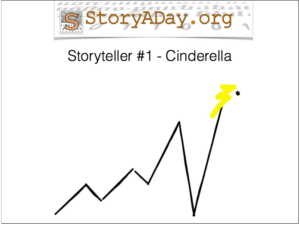This is it! You’ve made it!
This is the moment you’ve been waiting for. Today you’re going to take everything you’ve learned this month and write the story you’ve been waiting to write—the story you could not have written before today.
The prompt
Go big or go home
Tips
- If you have written at all this month, you’;; have shaken loose some writing muscles, learned ways of creating time, making your writing a priority, and silencing your inner critic sot hat you can get that first draft written. Now, take all the lessons you learned about what you do best, stuff your inner critic and your inner editor into the sack, shove it under the bed, close the bedroom door, lock it, put on some earmuffs and write the story you want to write, today.
- Go big. If you light dark stories, but think you’re too nice a person to really be writing dark…forget it. Go really dark.
- If you discovered this month that you’ve a talent for being funny, go big today, be hilarious. Be outrageous. Write something so silly, so funny that you make yourself laugh.
- If you’ve discovered a talent for romance, go gushy today. Target their heartstrings, make yourself cry, make yourself swoon. Don’t worry what anyone else will think. You never have to show the stories to anyone!
- Maybe you discovered you’r good at writing things a little bit sexy. Go wild today. Say the things you never thought you could say. If you’re worried, handwrite it and then have a ceremonial burning. If you’re really shy, tell the story to yourself by whispering it, in the shower.
- Go further than you ever thought you would. You can always dial it back and rewrite or use this memory as a yardstick for future writing when you know you’ve gone too far. But try to go too far today.
- Today is all about joy. Make sure you are feeling the joy, and whatever you decide to write. It can be short, it can be long, it can be brilliant, it can be a mess. Just have fun.
Thank you so much for playing along this month
. I hope you learned a few things. I hope you’ve got the creative kick in the pants you were looking for. **Leave a comment and let us know what you wrote today, what you learned this month just how glad you are to be finished 🙂
And remember, keep writing!!
Haven’t joined the mailing list yet? today’s a perfect day to do it. We’ll be back here tomorrow with the SWAGr accountability group to declare our writing goals for the next month. Come back each following month to tell everybody how you got on. The accountability group is the most powerful way I’ve discovered to stay true to my writing. I hope you’ll join us.

